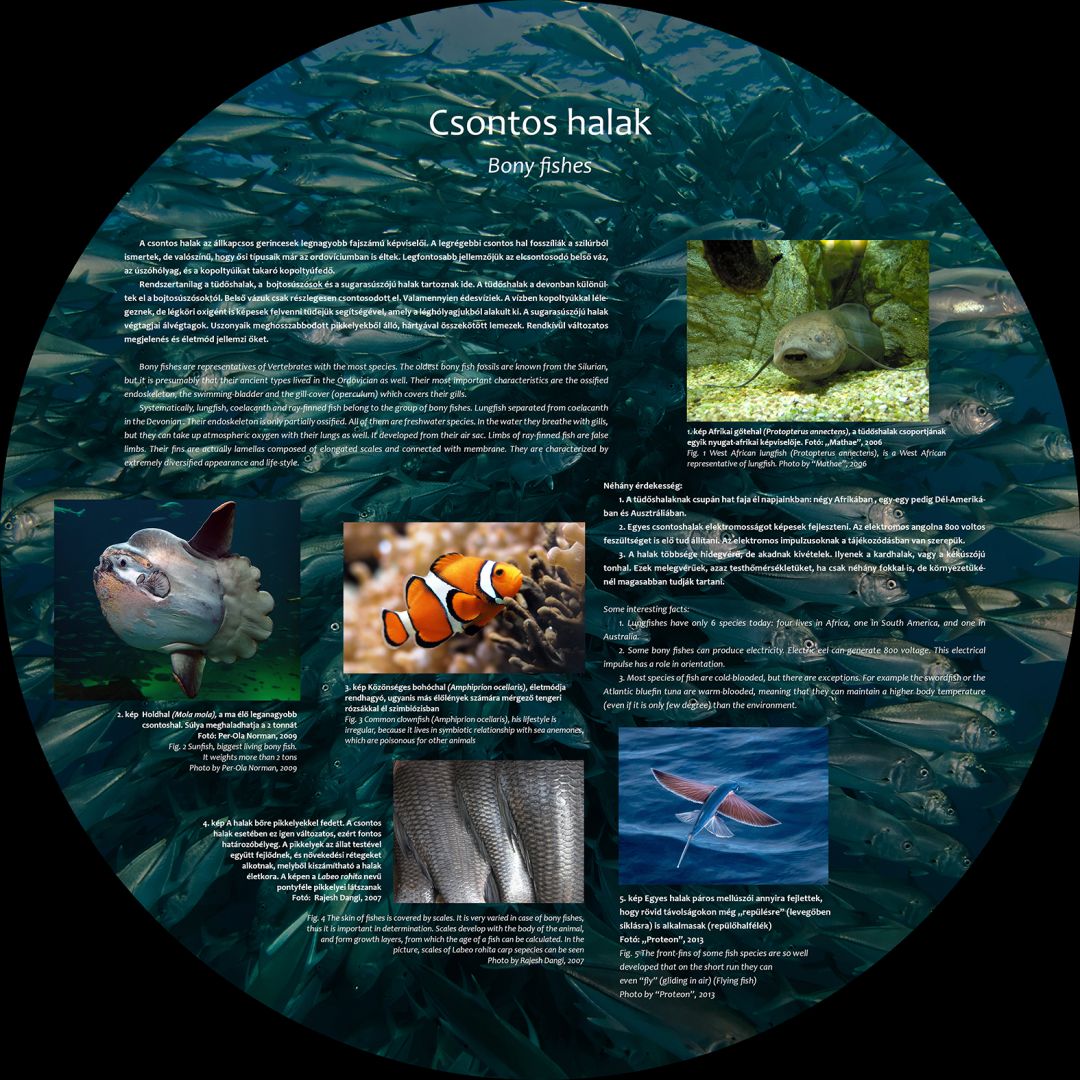GEOHISTORICAL GALERY - 3. view
Bony fishes
Bony fishes are representatives of Vertebrates with the most species. The oldest bony fish fossils are known from the Silurian, but it is presumably that their ancient types lived in the Ordovician as well. Their most important characteristics are the ossified endoskeleton, the swimming-bladder and the gill-cover (operculum) which covers their gills.
Systematically, lungfish, coelacanth and ray-finned fish belong to the group of bony fishes. Lungfish separated from coelacanth in the Devonian. Their endoskeleton is only partially ossified. All of them are freshwater species. In the water they breathe with gills, but they can take up atmospheric oxygen with their lungs as well. It developed from their air sac. Limbs of ray-finned fish are false limbs. Their fins are actually lamellas composed of elongated scales and connected with membrane. They are characterized by extremely diversified appearance and life-style.
Some interesting facts:
1. Lungfishes have only 6 species today: four lives in Africa, one in South America, and one in Australia.
2. Some bony fishes can produce electricity. Electric eel can generate 800 voltage. This electrical impulse has a role in orientation.
3. Most species of fish are cold-blooded, but there are exceptions. For example the swordfish or the Atlantic bluefin tuna are warm-blooded, meaning that they can maintain a higher body temperature (even if it is only few degree) than the environment.
Fig. 1 West African lungfish (Protopterus annectens), is a West African representative of lungfish. Photo by “Mathae”, 2006
Fig. 2 Sunfish, biggest living bony fish. It weights more than 2 tons. Photo by Per-Ola Norman, 2009
Fig. 3 Common clownfish (Amphiprion ocellaris), his lifestyle is irregular, because it lives in symbiotic relationship with sea anemones, which are poisonous for other animals
Fig. 4 The skin of fishes is covered by scales. It is very varied in case of bony fishes, thus it is important in determination. Scales develop with the body of the animal, and form growth layers, from which the age of a fish can be calculated. In the picture, scales of Labeo rohita carp sepecies can be seen. Photo by Rajesh Dangi, 2007
Fig. 5 The front-fins of some fish species are so well developed that on the short run they can even “fly” (gliding in air) (Flying fish). Photo by “Proteon”, 2013
